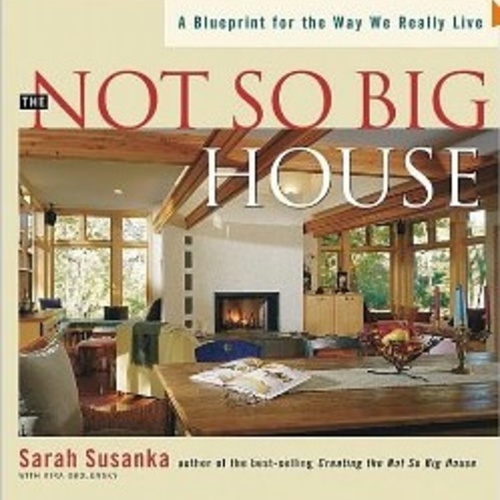
I had the pleasure of attending the 18th Congress for the New Urbanism in Atlanta this year. I have been following the development of the New Urbanism movement since its early days, having been introduced to it by my friend Peter Katz, who wrote one of the first books on the subject, The New Urbanism, almost 20 years ago. New Urbanism is a movement in architecture and development that promotes walkable neighborhoods by combining a range of housing types, community amenities, and businesses in close proximity. Interestingly, some of the best examples of “New” Urbanism can be found in older cities such as New York and San Francisco, and in much of Europe. New Urbanism embraces one core tenet of green building: reducing the amount of driving by designing communities that encourage walking, biking, and mass transit. These communities also encourage smaller buildings, indirectly promoting resource and energy efficiency.
What’s the code?
New Urbanism is developed using what are referred to as form-based codes, a type of regulation that replaces a traditional zoning code, which focuses on building use, with one that controls the physical form of buildings and their relationship to the streets to encourage walkability. Many successful new communities have been planned like this, creating (or re-creating) places where people can live, work, walk, and socialize.
About ten years ago, I brought up the idea of green building as a part of New Urbanism. At the time, my friend Mr. Katz expressed his opinion that he thought all green homes were ugly, although he has come around recently. It does appear that the movement has finally embraced green building, although it seems to me that they still have a long way to go in this regard. Planners of New Urbanist communities often have an opportunity to lay out the street grid, providing them an opportunity to design lots for appropriate solar exposure. Within individual blocks and lots, opportunities exist to create codes for building types that maximize the solar potential. I asked this question in several presentations, and while the response was generally positive and several professionals assured me that they were including these criteria in their new codes, I did not see enough evidence at the congress to assure me that they are doing everything they can.
SmartCode, an open-source form-based code, has recently introduced several add-on modules to their core document—including a sustainability section—which planners can use if they wish. All good, but when looking at the details of this module, they only have four sections: Wind Power, Solar Energy, Food Production, and Composting and Recycling. The solar energy component looks promising, but on further investigation, it only addresses orienting roofs for solar panels, rather than taking a bigger view of street and lot planning and how building forms can work best in different locations. An alternate module, produced by Farr Associates, goes into more depth with solar orientation, window shading, and overall energy demand reduction.
I very much appreciate the New Urbanism movement, and their actions are leading us toward energy efficiency and improved health and environment by reducing vehicle miles and building size, conserving natural resources, and encouraging a walking lifestyle. I look forward to seeing all aspects of green building incorporated into the codes for future developments.
Oh, and I almost forgot, the keynote speaker at the opening session was David Byrne, of Talking Heads fame. He gave a very quirky talk on bicycle riding. I kind of wish he’d sung instead…
Weekly Newsletter
Get building science and energy efficiency advice, plus special offers, in your inbox.















3 Comments
CNU problems
unfortunately, the aesthetic overtures of the CNU are often really awful, and have done a major disservice to the walkable community movement. also, most of the walkable communites the new urbanists work on tend to be outside of urban areas.
this is my major concern about a 'form based' code. at least the traditional zoning code allows a multitude of design options. mandating formal gestures (e.g. a sloped roof, or dormers) can royally screw up a neighborhood.
Form based code
New urbanist developments can certainly be done badly, but most of those that I have seen are done very well. Certainly many have been done outside urban areas, and without mass transit, they aren't as effective in creating walking communities as they could. Regardless, in general they are far superior to what has become the standard development pattern, separating residential from commercial areas, requiring people to drive almost everywhere. The best new urban communities mimic older cities, so much so that I have seen people in some of them think they were actually old neighborhoods rather than new ones. Most form based codes are not so restrictive on issues regarding roof slopes and construction details, rather they address how building volumes relate the the street and to each other leaving a lot of leeway for the actual building architecture.
Form based code
New urbanist developments can certainly be done badly, but most of those that I have seen are done very well. Certainly many have been done outside urban areas, and without mass transit, they aren't as effective in creating walking communities as they could. Regardless, in general they are far superior to what has become the standard development pattern, separating residential from commercial areas, requiring people to drive almost everywhere. The best new urban communities mimic older cities, so much so that I have seen people in some of them think they were actually old neighborhoods rather than new ones. Most form based codes are not so restrictive on issues regarding roof slopes and construction details, rather they address how building volumes relate the the street and to each other leaving a lot of leeway for the actual building architecture.
Log in or create an account to post a comment.
Sign up Log in